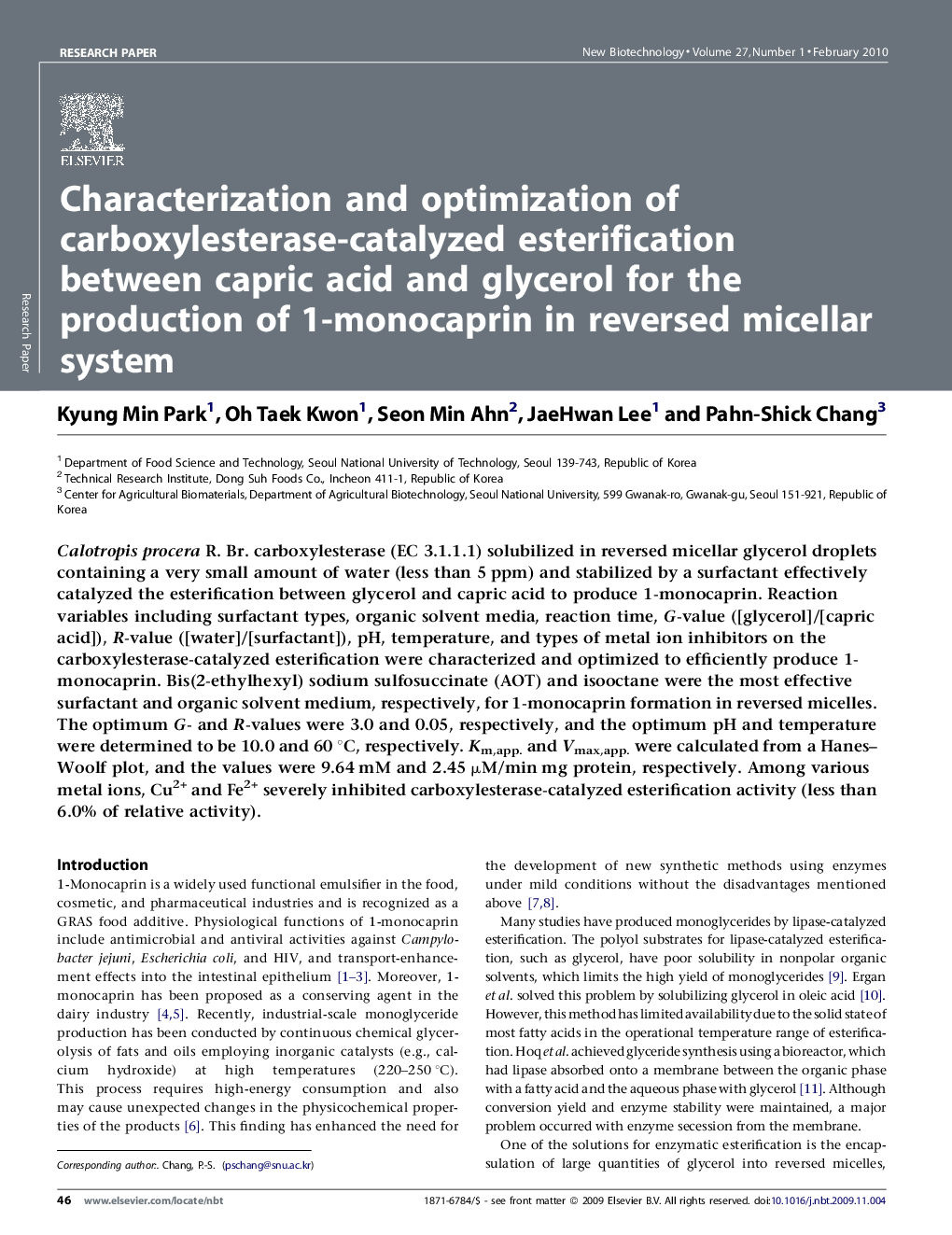| Article ID | Journal | Published Year | Pages | File Type |
|---|---|---|---|---|
| 33576 | New Biotechnology | 2010 | 7 Pages |
Calotropis procera R. Br. carboxylesterase (EC 3.1.1.1) solubilized in reversed micellar glycerol droplets containing a very small amount of water (less than 5 ppm) and stabilized by a surfactant effectively catalyzed the esterification between glycerol and capric acid to produce 1-monocaprin. Reaction variables including surfactant types, organic solvent media, reaction time, G-value ([glycerol]/[capric acid]), R-value ([water]/[surfactant]), pH, temperature, and types of metal ion inhibitors on the carboxylesterase-catalyzed esterification were characterized and optimized to efficiently produce 1-monocaprin. Bis(2-ethylhexyl) sodium sulfosuccinate (AOT) and isooctane were the most effective surfactant and organic solvent medium, respectively, for 1-monocaprin formation in reversed micelles. The optimum G- and R-values were 3.0 and 0.05, respectively, and the optimum pH and temperature were determined to be 10.0 and 60 °C, respectively. Km,app. and Vmax,app. were calculated from a Hanes–Woolf plot, and the values were 9.64 mM and 2.45 μM/min mg protein, respectively. Among various metal ions, Cu2+ and Fe2+ severely inhibited carboxylesterase-catalyzed esterification activity (less than 6.0% of relative activity).
